Cop26: The day the net zero carnival came to town
The new alliance for net zero presented a huge opportunity to tackle the climate crisis. But what happened was an audacious attempt to consolidate the control of bankers and private financiers over the new-look global economy. David Whyte explains
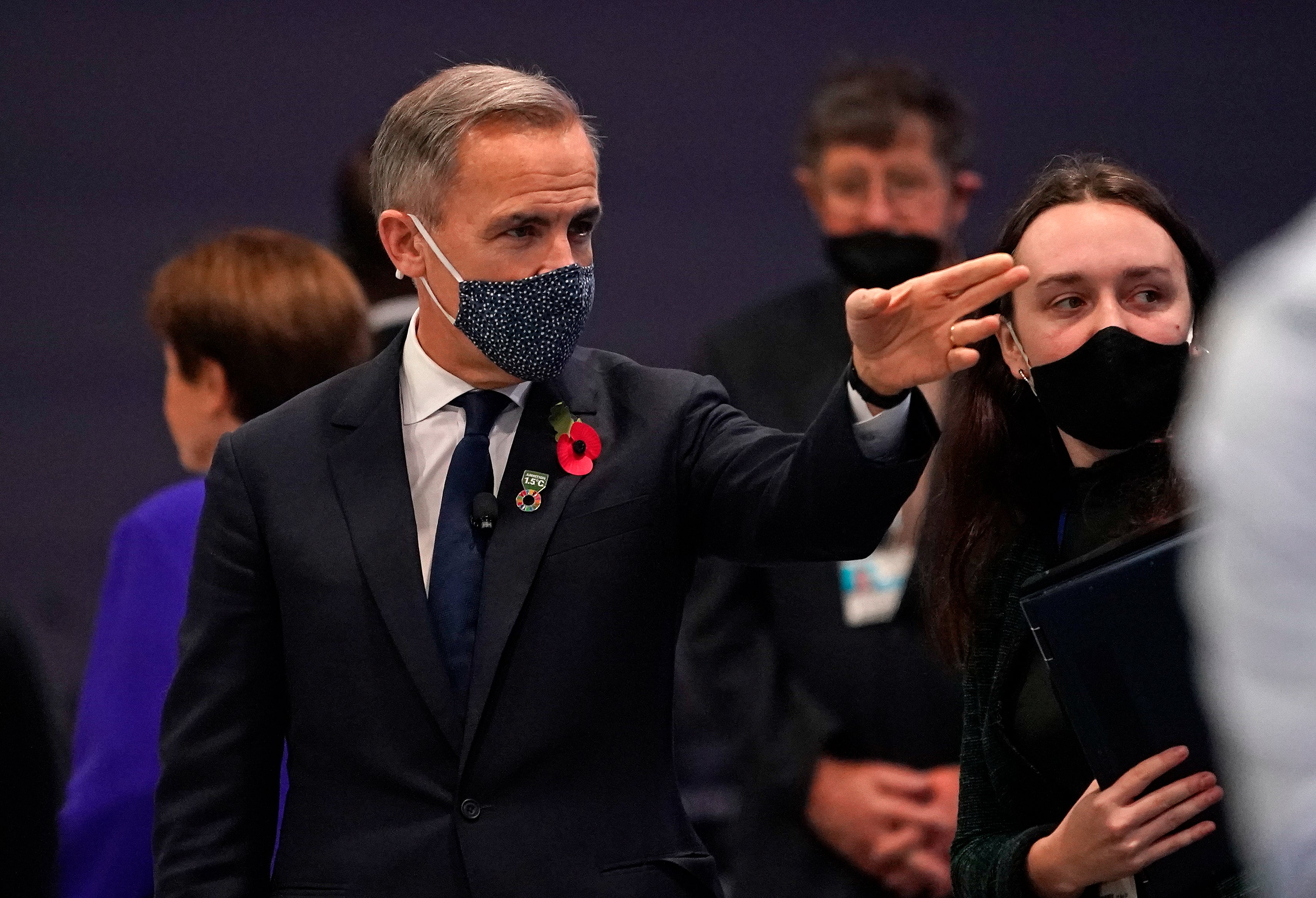
Launching the Glasgow Financial Alliance for Net Zero (GFANZ) agreement last week, Mark Carney lamented: “A few years ago, the financial system held a mirror to the climate crisis. Not any more.” Maybe so, but there was something of a smoke and mirrors feel to the conference as he announced an astounding $130 trillion (£96 trillion) deal to tackle climate change, pledged by the world’s major banks and financiers.
In the “Blue Zone”, on the north bank of the River Clyde, behind the high-security cordon where the intergovernmental negotiations were taking place, some familiar climate villains had been assembled. Joining Carney on the alliance panel discussions were Larry Fink of Blackrock, possibly the worlds biggest fossil-fuels investor, and Jane Fraser of Citibank, the biggest investor in coal outside China. Could anyone have been surprised when, after the Carney, Fink and Fraser show was over, Greta Thunberg stormed out of the meeting on carbon offsetting, pleading with delegates to “stop greenwashing”?
Was this greenwashing? Well, it was obvious to anyone who bothered to read the small print that there was no $130 trillion “deal”. All that the $130 trillion figure represented was a crude, back-of-the-envelope sum of the combined assets of all of the signatories. The figure released by Carney and the alliance was a notional one, dependent on a rather stretched leap of faith. The total assets held by signatories amounted to roughly 40 per cent of the world’s financial capital (or something close to £130 trillion). If those signatories no longer invested in carbon projects, then all of their assets could be regarded as “green”. Simple.
Few do read the small print, and we saw some spectacular misreporting. The New York Times headline screamed: “Financial industry, with $130 trillion, to pursue climate goals”; Bloomberg followed suit with: “Carney unveils $130 trillion in climate finance commitments”. He had done nothing of the sort. And they knew it. Michael Bloomberg is, after all, part of the GFANZ inner circle.
To give Carney his due, he had pulled off a very big heist, in broad daylight, under the spotlight of the international press. But when everyone realised their mistake, it was all too late. A matter of hours after the announcement, the BBC issued a correction – admitting that the $130 trillion was merely a count of all assets – before swiftly moving on to the next Cop26 story… something about Glaswegian schoolkids saying funny things about the summit.
All of this smoke and mirrors may well have been planned for a long time. Yet it is more plausible that this $130 trillion heist was the only press content that Carney could salvage from his failed attempt at a more meaningful deal. In the weeks leading up to the conference, documents leaked to the Financial Times revealed that most of the big banks were refusing to sign the agreement that Carney sought. This agreement – following the International Energy Agency (IEA) roadmap – would pledge zero carbon by 2050. The reason for the refusal? The IEA roadmap explicitly includes a ban on new oil and gas exploration from 2021 onwards. Less than two weeks before Cop26, with major banks refusing to go down this route, Goldman Sachs boldly announced that it would continue to do business with fossil-fuel companies and would continue financing fossil-fuel developments. CEO David Solomon explained: “If we’re too aggressive … that can be more inflationary.”
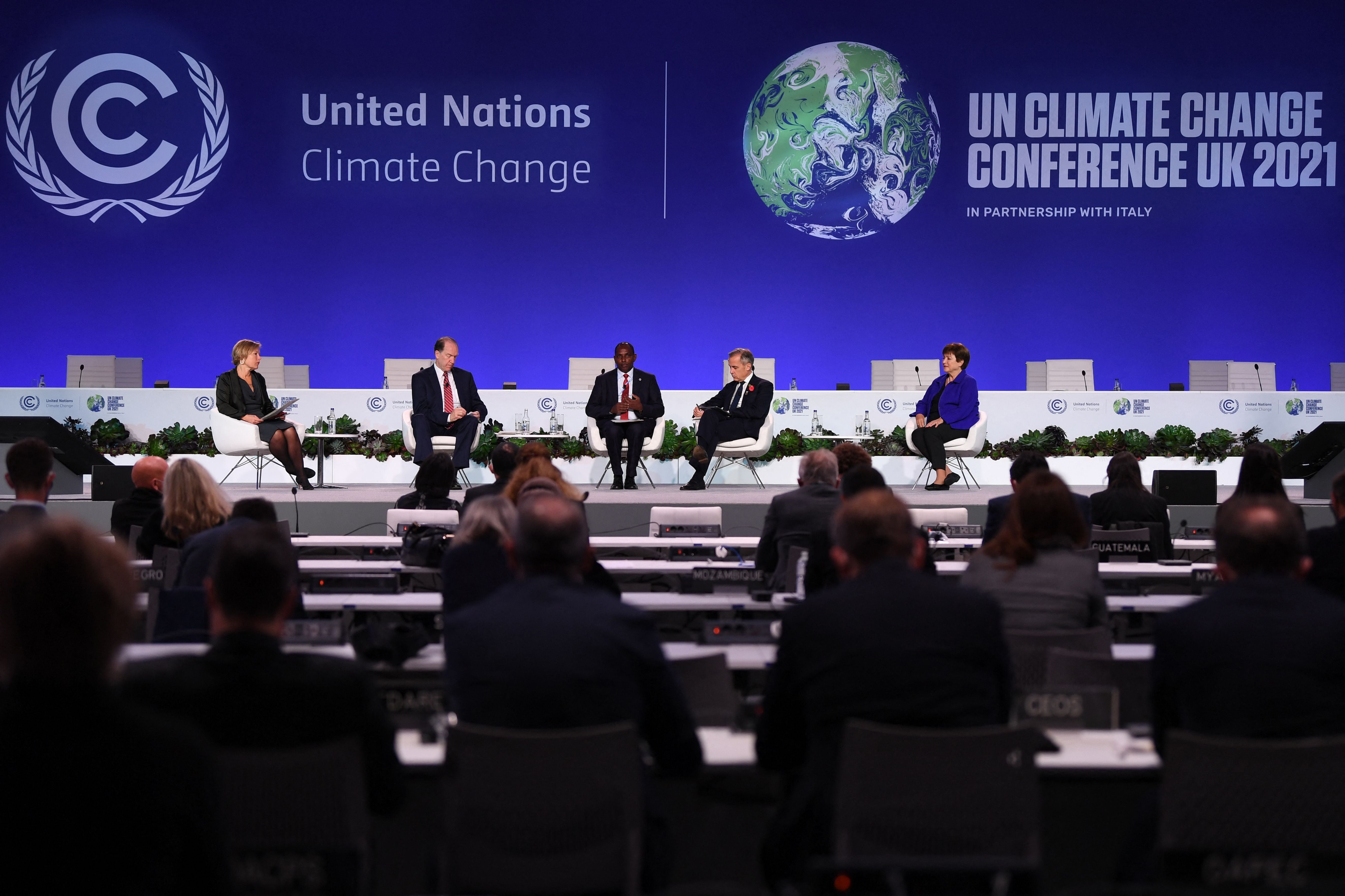
The malevolent influence of the corporate sector on the UK’s custodianship of Cop26 was on full view before the conference had begun. In a story broken by Byline Times on the first day of the conference, it was revealed that the chair of Cop26, Alok Sharma, had received £20K towards election expenses from two different oil and gas companies. Perhaps because it knew this was coming, or perhaps because it knew that a separate parliamentary cash-for-influence scandal was in the air, the UK government had earlier drawn a line and refused Big Oil sponsorship at Cop26. Other, non-fossil-fuel sponsors were rounded up.
It speaks volumes about how we approach climate change policymaking that Cop conferences embrace corporate sponsorship while other major intergovernmental meetings don’t. BAE Systems doesn’t get to sponsor the UN Human Rights Council, and Coca-Cola doesn’t get to add life to UN General Assembly meetings. But in Glasgow, the banks, energy companies and supermarkets, along with the manufacturers of food, cars, computers, aircraft, soap products and so much more, all get to turn up the volume on how they are each doing their “bit”.
Sponsors have a more ambitious mission: to convince the world that it would be suicide to disrupt their business model, because their business model is necessary to save the planet
Over at the “Green Zone”, on the south side of the river, the “clean” sponsors selected for Glasgow are on parade. On entry to the Green Zone, the first things you see are Rolls-Royce-built prototypes of electric aircraft and submarines. Then it’s an eco cinema, workshop spaces, and a low-carbon cafe – stuffed with local and vegan foods – catering for business people, indigenous delegations, campaigners and other assorted NGOs, all sitting at rows upon rows of Ikea (second-tier partner) tables and chairs.
The exhibition stands provided by the first-tier principal partners are modern-day versions of Victorian fairground attractions. Here there is no fortune-telling, but there are plenty of computer-generated versions of our future weather systems; no coconut shy, but plenty of interactive push-button games that con you into the wrong answer before telling you the right one; and no “bunco booths”, but plenty of clever tricks about how the banks, food companies and supermarkets sponsoring the event have the climate solution in their grasp.
The custodians of those stands may not wear waistcoats and bowler hats, but they come at you all eager-eyed, with sharp one-liners and strange facts to amaze and delight. Have you seen Microsoft’s facial recognition system for tracking puffins? SSE’s power plant that makes water flow uphill? The world’s first zero-carbon-powered film brought to you by Hitachi? Or, have you seen the fastest electric car in the world (top speed 239 km/h) brought to you by Envision Virgin Racing? And so it goes on and on. Endless eye-popping science and climate-defying genius.
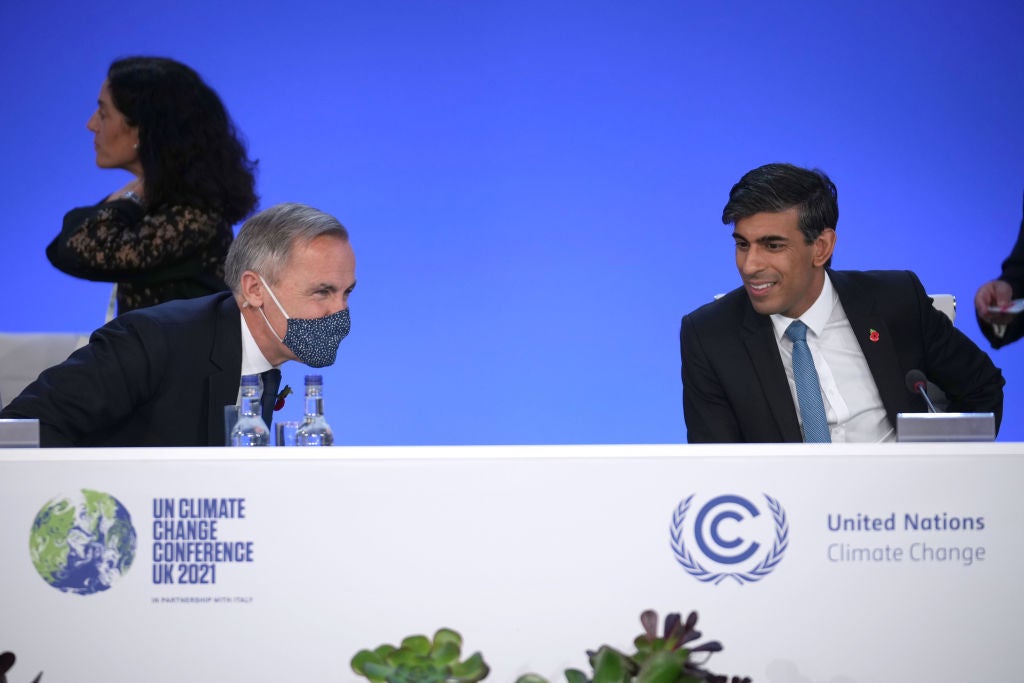
A month before the summit opened, we were treated to a distinctly undignified fall-out between the Johnson government and the Cop26 sponsors. The energy companies – Hitachi, National Grid, Scottish Power and SSE – were especially put out that there was more than one of them. This is not what is supposed to happen. The Oscars has one official car (Cadillac), the Eurovision Song Contest has one official bank (Raiffeissen), and the Champions League has one official energy company (Gazprom). If you can’t be the official energy company of Cop26, then what’s the point? Heaven forbid that other energy firms might be showcasing their renewable strategies and projects.
Back in the Green Zone, Fiona, a Sky rep, handed me a packet of the firm’s wildflower seeds, specially branded for distribution at climate summits, and told me: “We are the only company in the sector that has the approach needed to tackle climate change.” Ok. Sky, the TV company? The only company? Really?
The accelerated growth of capitalist markets is the starting point for almost everything that was agreed in Glasgow’s financial settlement
This is a pretty consistent theme here, a not so well-hidden message on the corporate stands of Cop26’s sponsors: “Our business model is the best for tackling climate change.” Just as the new Sky Glass is the only TV that can save the planet, SSE’s energy-supply model is the only one that can boost renewable usage and at the same time save on bills; and only Sainsbury’s unique “nudge” approach can effectively reduce single-use plastics in the grocery supply chain. The message rings out from behind the visual trickery of every VR headset, is in the sub-text of every interactive game, and is hiding under every tropical plant on those stands: without the business models of the climate pioneers showcased in the Green Zone, we cannot hope to save the planet.
Yes, this is greenwashing; that goes almost without saying. But the purpose of this carnival is so much more. Sponsors have a more ambitious mission: to convince the world that it would be suicide to disrupt their business model, because their business model is necessary to save the planet. Could it be that the green revolution for Cop26 sponsors is seen, above all else, as a means to expand their market share? Surely not.

At the Unilever stand there is something resembling a consumer feeding-frenzy going on. We are told to consume more Hellmann’s mayonnaise (it turns food waste into something delicious), more of Knorr’s “Future 50 Foods” and more of its Vegetarian Butcher range. It is as if the brands have not yet realised that growing new consumer markets might not be the best way to conserve energy and precious resources. And so we are told to take more bank loans, but take them from the Royal Bank of Scotland (because they have the best technology to check the carbon footprint of what we buy and invest in). We are told to buy more Sky TVs (because their design is more amenable to repair and reuse than other TVs). We must buy more Microsoft phones, laptops and tablets (because Microsoft saves the puffins). This is a business model of more, more, more, more. More accumulation of unnecessary goods, more accumulation of profits.
Accumulating more to tackle climate change would have been a more appropriate slogan for Glasgow’s Cop26. The accelerated growth of capitalist markets is the starting point for almost everything that was agreed in Glasgow’s financial settlement. Carney launched the GFANZ agreement with a chilling promise to “intensify and accelerate as we seek to turn this existential challenge into an enormous opportunity for sustainable and inclusive growth.” Perhaps the most ambitious push is its development model. The explicit aim set out by GFANZ is to stimulate £1 trillion per year in investment over the coming three decades, to “ratchet up capital flows in net zero aligned climate solutions in emerging markets and developing countries.” There is nothing here that reverses the historical legacy of what happens when global north corporations “ratchet up capital flows” into the global south.
Could it be that the green revolution for Cop26 sponsors is seen, above all else, as a means to expand their market share? Surely not
What happens is that net gains flow north, on an astounding scale – certainly over $500bn a year – and uncannily this amounts to around $1 trillion if illicit flows are taken into account. Those resource transfers are very often in the most nature-devouring sectors, mining and agriculture, the major drivers of deforestation. And perhaps a third of those flows are expropriated via tax havens. Yet there is no proposal to reverse this relationship – perhaps the single most important factor in climate change. GFANZ offers no alternative to neocolonial extraction, and no alternative to the global expropriation of resources from south to north.
Without fundamental changes to the model, and a change to the fundamental inequalities that drive the model, we can predict exactly what those “net zero aligned climate solutions” will be. They will be what they have always been: major hydroelectric dams that produce renewable power sources but fatally disrupt biodiversity; mining projects to extract the things that the new economy needs, but will still poison the rivers; tree plantations that are carbon-neutral but leave the soil dead; or GMO crops that don’t need pesticides but will never reproduce another crop. The GFANZ blueprint spells out this “investment opportunity based on accelerated growth”. The profits will flow north as they always have.
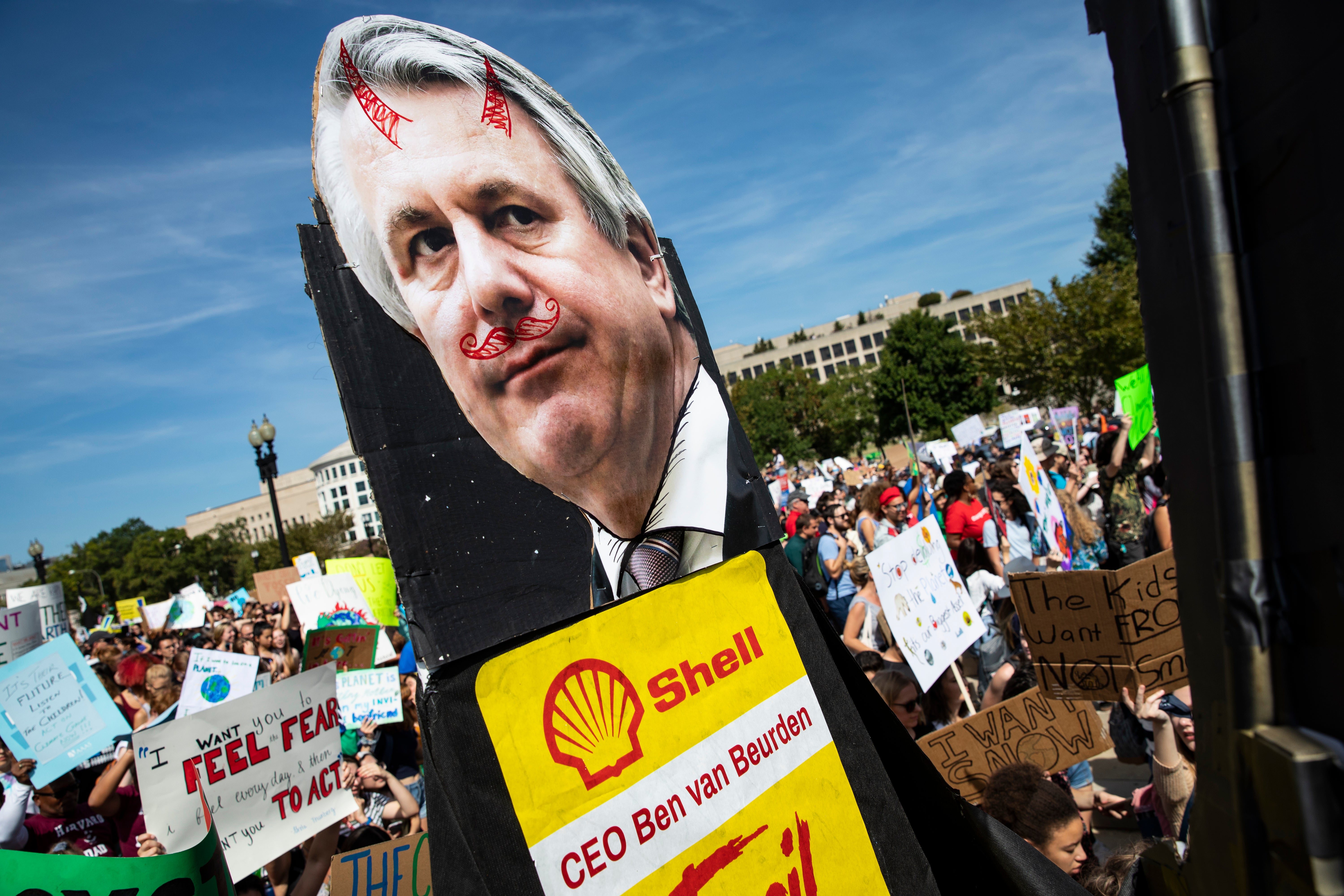
The message of couldn’t be clearer, and it couldn’t be any less radical: to save the world, we just need to do what we’ve always done (but do it better). Back in the Green Zone, the message is similar, but scaled down slightly: consumers need to keep consuming (but do it better). At the Reckitt stand, the makers of Vanish, Calgon and Dettol recite climate-change commandments for us all to follow: 1. Wash your hands with cold water (did you not know that our handwash is designed for this?) 2. Use a dishwasher and stop pre-washing dishes (on message – remember Johnson’s Cop26 spokesperson Allegra Stratton?) 3. Wash your laundry at 30C (did you not know that our brands were designed for a low-temperature wash?) 4. Wear your clothes for longer (but keep using our brands); and 5. Don’t cut your grass (and, not to be outdone by Sky) plant some wildflower seeds.
In this carnival of mirrors, a corporation like Microsoft can boast about saving puffins while simultaneously providing the software expertise necessary for more efficient oil-well drilling
Sure, we all have to wake up and smell the flowers. But this should not just be about the way we use their brands, should it? When I asked Joe, from Reckitt’s sustainability team, how they measured the environmental impact of all the chemicals used in their products, he drew a blank. “It’s another team that deals with that.” And when I asked him whether their industrial processes could produce Dettol and Vanish at lower temperatures, the same response: “It’s another team that deals with that.” In this carnival of mirrors, where a corporation like Microsoft can boast about saving puffins while simultaneously providing the software expertise necessary for more efficient oil-well drilling, this seems like the most apt motif for our times: “It’s another team that deals with that.”
In the run-up to Cop26, Shell chief executive Ben van Beurden gave a revealing interview to the world’s press. Sitting in one of his company’s oil refineries in Rotterdam, he explained how to resolve his seemingly paradoxical commitments to the “legacy” business and to low-carbon fuels and renewables. “If we have to build a hydrogen plant … that is not going to be funded by a hydrogen business – it will be funded by the oil and gas business.” Spoiler alert: Shell, right now, is pushing the UK government hard to allow development of the new Cambo field in the North Sea.

Despite his absence, the principle articulated by Van Beurden is at the heart of everything to come out of Glasgow: let us do what is harming us most, so that we can spend a proportion of the profits on the things that will stop harming us. It is a principle that may accelerate investment, but it also immeasurably slows progress. It’s a principle that will ultimately paralyse any real prospect of system change; we might call it the Van Beurden paradox.
The Van Beurden paradox sums up the dominant sentiment projected by corporate players in both the Blue and the Green Zone: the business model must be preserved at all costs. And this business model, the one that must be preserved, is essentially an institutional model of codependency, an inseparable symbiosis of clean and dirty industry. Indeed, this is the core article of faith in the GFANZ agreement. In a hugely revealing section on “balancing” investments, the report concludes:
“While financial institutions can progress towards net zero portfolios by withdrawing finance from today’s carbon-intensive sectors, this strategy would not help provide capital to counterparties that are credibly engaged in net zero transition.”
There you have it: capital cannot withdraw from carbon-intensive activity, or there will be no capital to fund non-carbon-intensive activities. The Van Beurden paradox, set out explicitly as the basis for how investment portfolios can be all things to everyone.
There you have it: capital cannot withdraw from carbon-intensive activity, or there will be no capital to fund non-carbon-intensive activities
The same paradox lies at the heart of the concept of net zero. Net zero is not zero. It is a market measure of zero. This is because the market has found a way of reaching zero whilst simultaneously burning fossil fuels. It is a kind of balancing act made possible by directly funding other activities that purport to remove carbon from the system at some point in the future (tree planting, speculative new carbon-capture technologies), or by purchasing carbon credits generated by renewable-energy projects, by restoration of woodlands or peatlands, or by the removal of CO2 from the atmosphere.
The alliance signatories have signed up to “decarbonising” by 2050. But read the small print: this doesn’t mean decarbonising. It means ending investment in new oil and gas projects by 2050. And the “net” prefix in net zero means that offsetting can be used to balance carbon-based investments, including the financing of oil and gas projects that will still be running beyond 2050. In other words, the GFANZ agreement theoretically allows oil and gas projects to remain in place beyond 2050, as long as they are offset.
Outside the conference on the day the Carney, Fink and Fraser show had come to town, hundreds of protesters knew exactly what was going on
This agreement effectively gives a Cop26 seal of approval to the most carbon-intensive projects in the world, as long as they are offset. In this context, it doesn’t seem to matter much that the majority representing 60 per cent of the world’s finance – including the three biggest banks in the world – have not signed up, and will continue to fund all of China’s and Russia’s most intensive carbon projects. Many of the signatories will do this too.
And this is where we find the truth, maybe the only truth we can find in this cacophony of greenwashing: if all we are being offered is the same old business model, then this is not enough. We cannot save the planet using a business model that is based on corporate finance. The latest IPCC (Intergovernmental Panel on Climate Change) report reminds us that in order to keep to a target of 1.5C, we need to stop all new hydrocarbon developments now, and to push existing production off the cliff. But the business world is not prepared for this task. It is not prepared to pay for this task, and it couldn’t even if it tried. There are not only financial disincentives, but also binding legal duties on directors to protect shareholders and not spend their money on such things. Shell’s solution is instead to use oil and gas production to pay for the hydrogen, just as the Hellmann’s solution is to make more mayonnaise (which means more animal farming) to cut kitchen waste. The Van Beurden paradox promotes a business model that makes the future of the planet dependent on the things that are killing the planet.
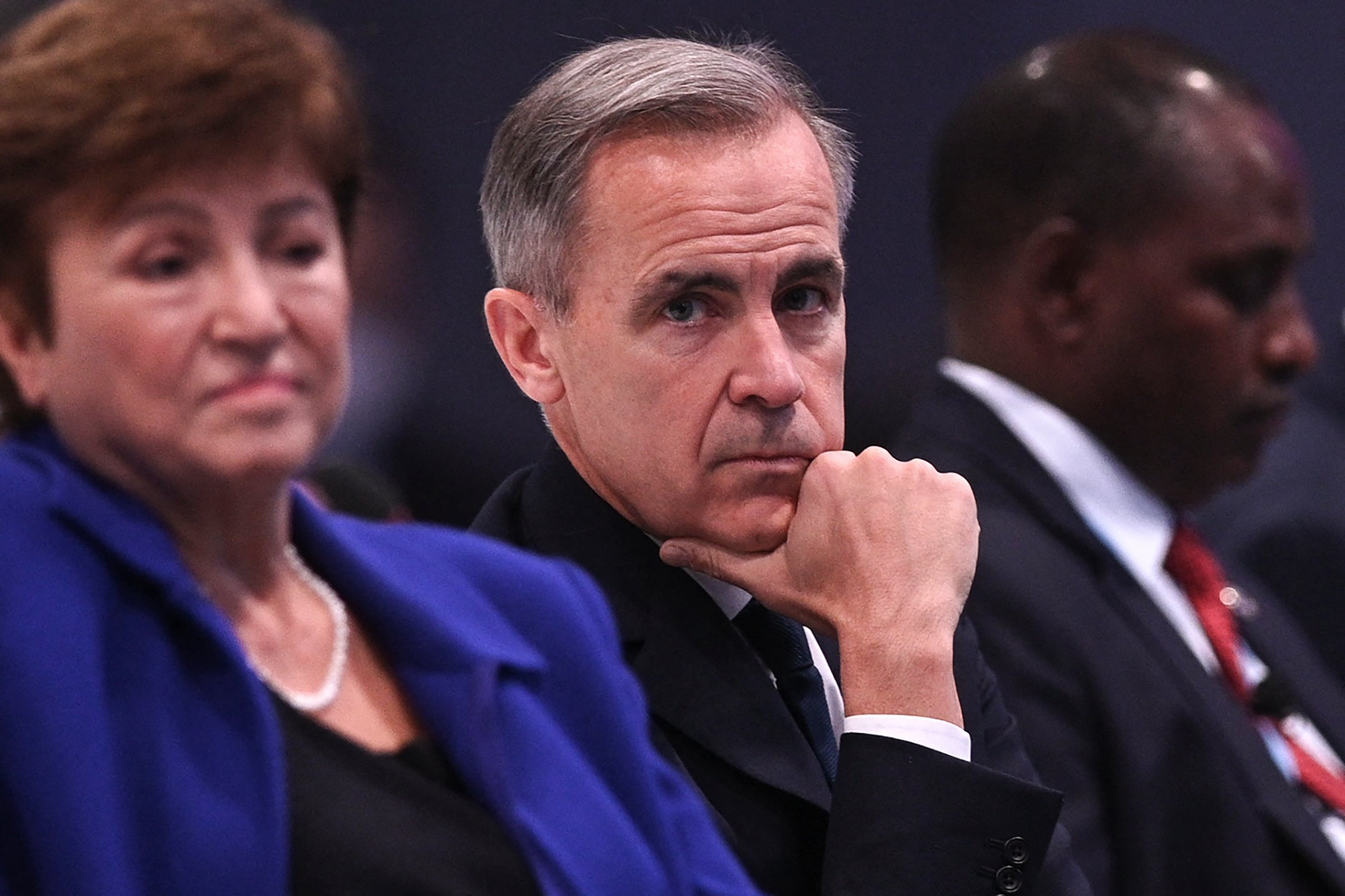
And if this was not bad enough, this business model leaves us dependent on the very same corporations that are responsible for killing the planet. Take the bundle of emerging, as yet unproven, technologies that are known as “carbon capture and utilisation” (CCU). Those technologies aim to recycle CO2 for other uses. This might be in the form of fertiliser, new polymers, new synthetic fuels, or construction materials like concrete and asphalt. The idea of utilisation is basically that carbon captured from the environment can be used in a secondary form. CCU is the Van Beurden paradox in perfect symmetry: it uses CO2, the by-product of other commodities, to produce more commodities.
The problem is that the CCU market is almost entirely dominated by five industries: oil, construction, chemicals, mining and agriculture. On one hand, this is a problem because the big ideas that are promoted by companies are only promoted if they are profitable (or if they are subsidised to the point that they are profitable for the corporations developing them). But on the other hand, a bigger problem is that where they are profitable, those technologies incentivise the production of carbons. The latest research shows that CCU concrete production actually results in a net increase in CO2.
By far the most significant mode of carbon capture, in terms of the sheer volume of CO2 stored, is a process called enhanced oil recovery. This is the process by which pressurised CO2 is literally injected into existing oil and gas reservoirs to enhance production. There are two things that are notable about enhanced oil recovery. First, as a method of extraction, CO2 injection comes at the end of the oil-production process, ensuring that as little oil as possible is left in the ground. Second, the CO2 used in this process is used to calculate fossil-fuel offset. Oil and gas companies can claim to be carbon neutral the more they use CO2 in this way. It is not a new technique – it has been around since the 1970s. It is the same technique that the oil industry has always used to speed up the production of oil and gas. And suddenly it is “green.” This is the Van Beurden paradox at work again, giving Big Oil green credentials for producing more fossil fuels.
No one in the Blue Zone was talking seriously about immediate repurposing of the oil, gas and mining industry, or that of the chemicals industry, or agriculture. Instead, the solution has been left in the hands of the firms that control those industries. And they are enthusiastically pushing the CCU option. The further entrenchment of the Van Beurden paradox as the principle ruling global finance will be the enduring legacy of Glasgow, unless we do something different.
Outside the conference on the day the Carney, Fink and Fraser show had come to town, hundreds of protesters knew exactly what was going on. One sign read: “There are three kinds of lies: lies, damned lies and greenwashing”, another: “Greenwashing = Murder”. But in fact what happened inside the Blue Zone was much more insidious and much more dangerous than greenwashing. What happened here was an audacious attempt to consolidate the control of bankers and private financiers over the new-look global economy. Insofar as Big Capital was not challenged – and barely questioned – inside the conference hall, the same old villains have been left in charge of the same old carnival.
Join our commenting forum
Join thought-provoking conversations, follow other Independent readers and see their replies
Comments



Bookmark popover
Removed from bookmarks